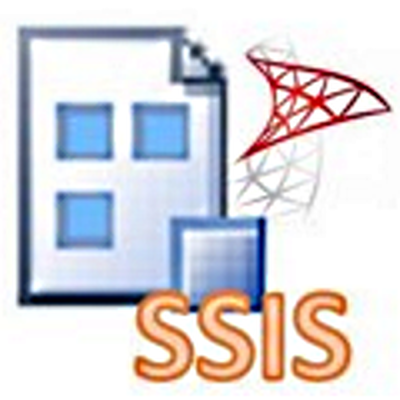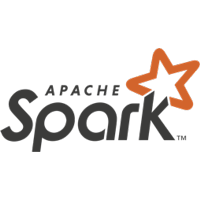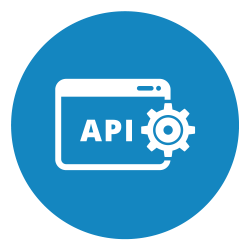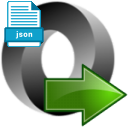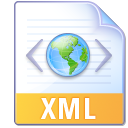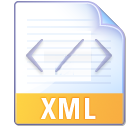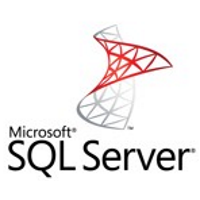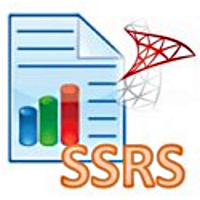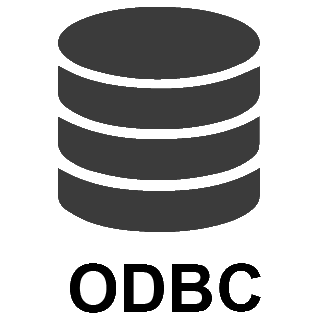ServiceNow Connector for SSISAllows the reading and writing of incidents, attachments, and more in ServiceNow without coding! The ZappySys ServiceNow API Connector provides easy-to-use, high-performance API access. In this article you will learn how to quickly and efficiently integrate ServiceNow data in SSIS without coding. We will use high-performance ServiceNow Connector to easily connect to ServiceNow and then access the data inside SSIS. Let's follow the steps below to see how we can accomplish that! ServiceNow Connector for SSIS is based on ZappySys API Connector Framework which is a part of SSIS PowerPack. It is a collection of high-performance SSIS connectors that enable you to integrate data with virtually any data provider supported by SSIS, including SQL Server. SSIS PowerPack supports various file formats, sources and destinations, including REST/SOAP API, SFTP/FTP, storage services, and plain files, to mention a few (if you are new to SSIS and SSIS PowerPack, find out more on how to use them). |
Connect to ServiceNow in other apps
|
Video Tutorial - Integrate ServiceNow data in SSIS
This video covers the following topics and more, so please watch carefully. After watching the video, follow the steps outlined in this article:
- How to download and install the required PowerPack for
ServiceNow integration in SSIS - How to configure the connection for
ServiceNow - Features of the
ZappySys API Source (Authentication / Query Language / Examples / Driver UI) - How to use the
ServiceNow in SSIS
Prerequisites
Before we begin, make sure the following prerequisites are met:
- SSIS designer installed. Sometimes it is referred as BIDS or SSDT (download it from Microsoft).
- Basic knowledge of SSIS package development using Microsoft SQL Server Integration Services.
- SSIS PowerPack is installed (if you are new to SSIS PowerPack, then get started!).
Read data from ServiceNow in SSIS (Export data)
In this section we will learn how to configure and use ServiceNow Connector in API Source to extract data from ServiceNow.
-
Begin with opening Visual Studio and Create a New Project.
Select Integration Service Project and in new project window set the appropriate name and location for project. And click OK.
-
In the new SSIS project screen you will find the following:
- SSIS ToolBox on left side bar
- Solution Explorer and Property Window on right bar
- Control flow, data flow, event Handlers, Package Explorer in tab windows
- Connection Manager Window in the bottom
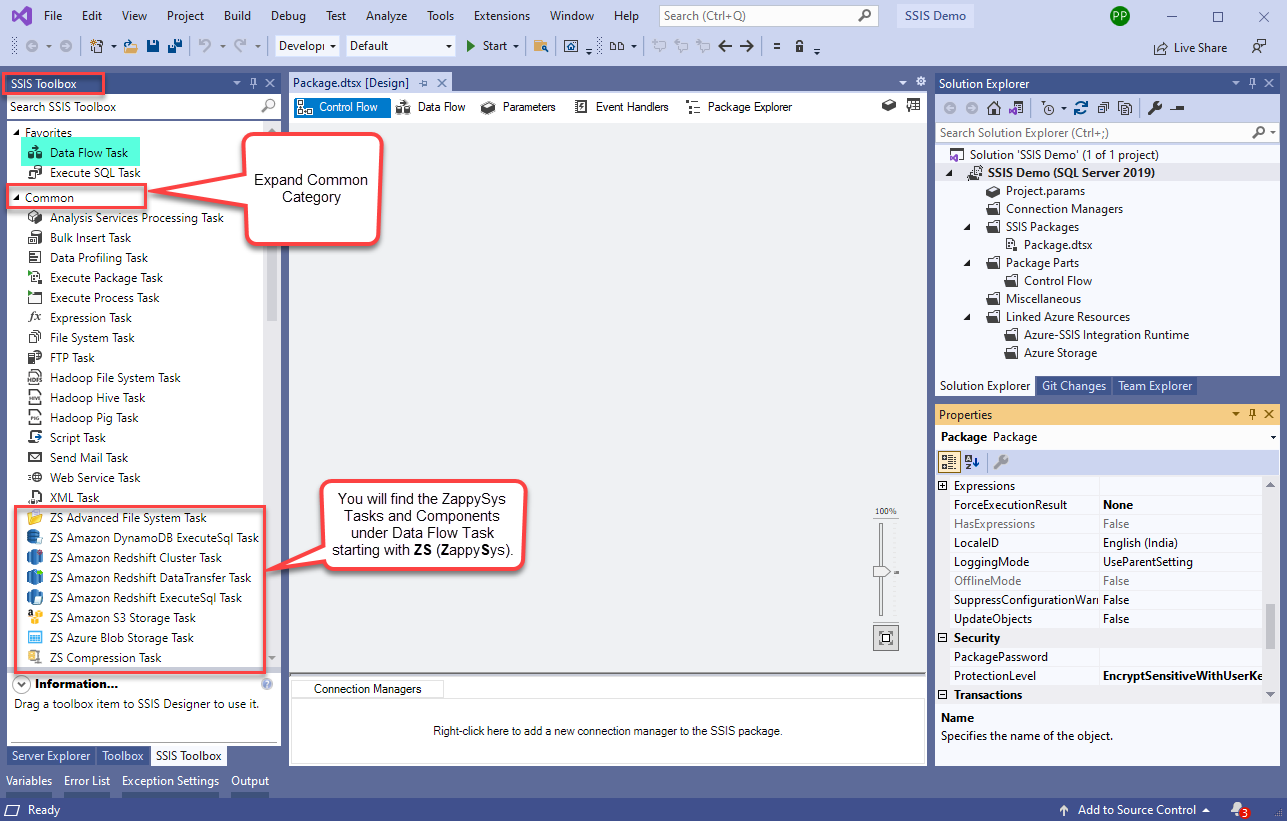 Note: If you don't see ZappySys SSIS PowerPack Task or Components in SSIS Toolbox, please refer to this help link.
Note: If you don't see ZappySys SSIS PowerPack Task or Components in SSIS Toolbox, please refer to this help link. -
Now, Drag and Drop SSIS Data Flow Task from SSIS Toolbox. Double click on the Data Flow Task to see Data Flow designer.
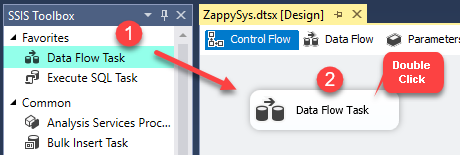
-
From the SSIS toolbox drag and API Source (Predefined Templates) on the data flow designer surface, and double click on it to edit it:
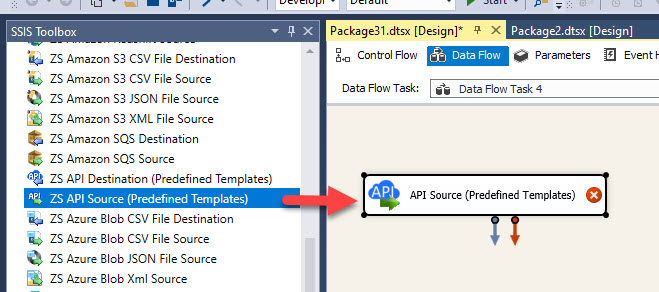
-
Select New Connection to create a new connection:
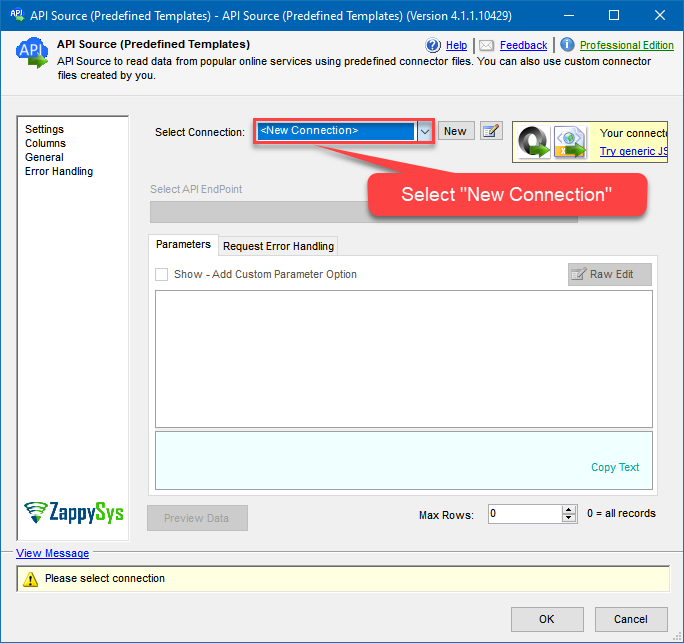
-
Use a preinstalled ServiceNow Connector from Popular Connector List or press Search Online radio button to download ServiceNow Connector. Once downloaded simply use it in the configuration:
ServiceNow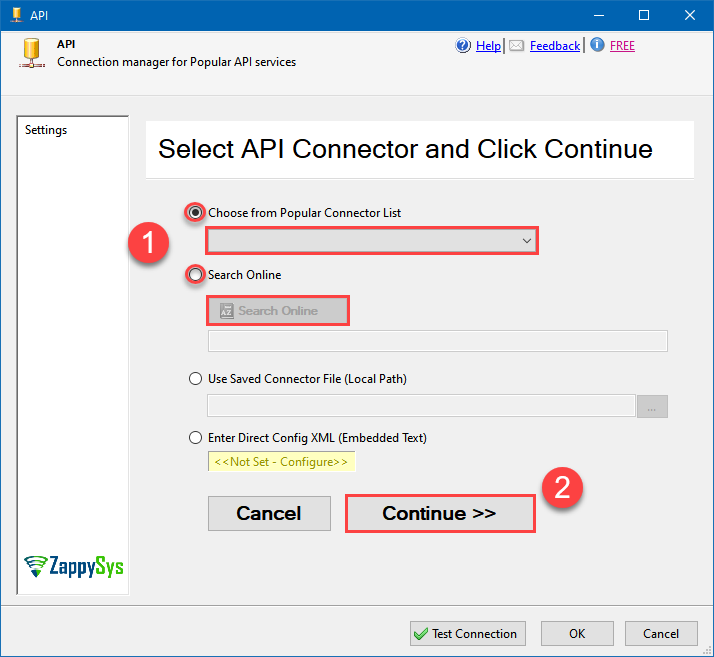
-
Proceed with selecting the desired Authentication Type. Then select API Base URL (in most cases default one is the right one). Finally, fill in all the required parameters and set optional parameters if needed. You may press a link Steps to Configure which will help set certain parameters. More info is available in Authentication section.
Authenticate using ServiceNow instance username and password.
Steps how to get and use ServiceNow credentials
Locate your ServiceNow instance credentials and use them for HTTP authentication:
- Go to https://developer.servicenow.com/dev.do and log in.
- Click on your profile picture.
-
When a menu appears, click on Manage instance password or a similar option:
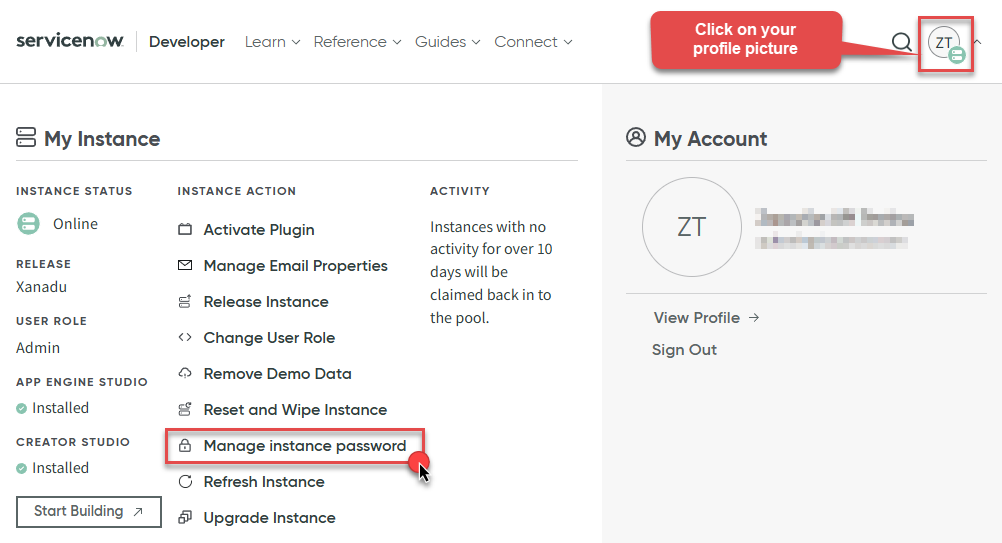
-
In a new window you will see your HTTP Basic Authentication credentials:
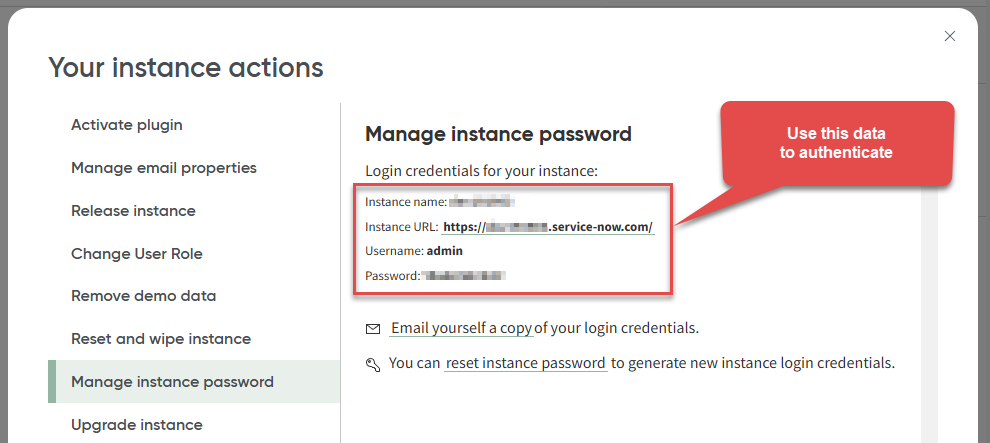
-
Done! Use this username and password when configuring OAuth Authentication parameters.
Configuring authentication parameters
ServiceNowBasic Auth [Http]https://[$InstanceName$].service-now.com/api/nowRequired Parameters InstanceName Fill-in the parameter... User name Fill-in the parameter... Password Fill-in the parameter... Optional Parameters ApiVersion v2 RetryMode RetryWhenStatusCodeMatch RetryStatusCodeList 429 RetryCountMax 5 RetryMultiplyWaitTime True 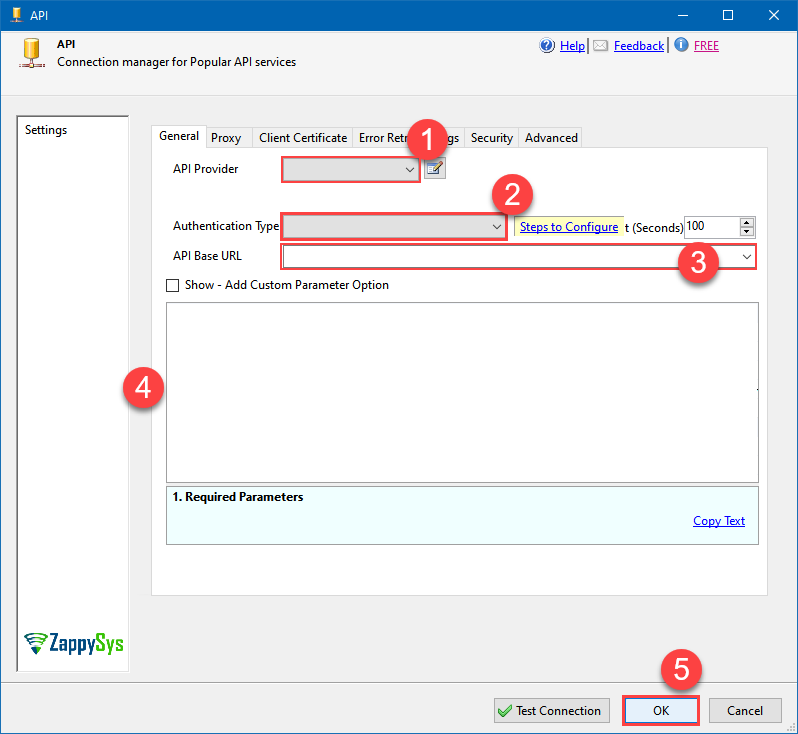
Authenticate using ServiceNow instance username, password, OAuth Client ID, and Client Secret. [API reference]
Steps how to get and use ServiceNow credentials
Create OAuth application and use it for authentication:
- Login to your instance at https://your-instance-id.service-now.com.
-
Start by clicking on menu item All, then search for oauth, and click Application Registry option:
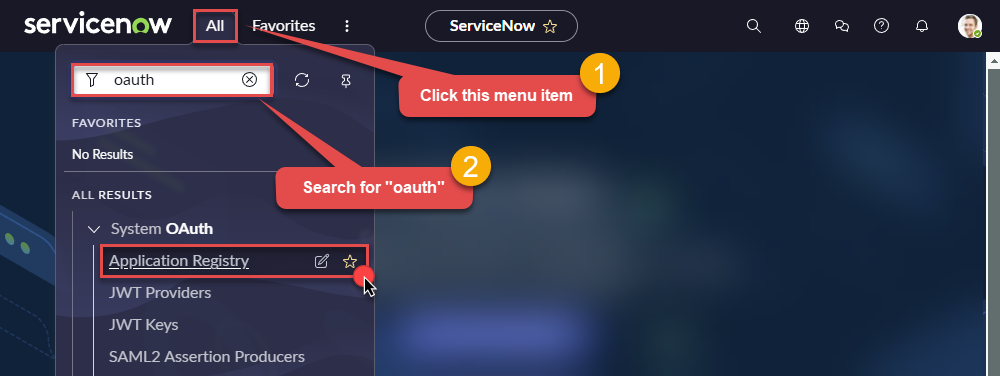
-
Then click button New:

-
Continue by clicking Create an OAuth API endpoint for external clients option:

-
Move on by naming your OAuth application and entering a Client Secret (or let it be generated automatically).
-
Finally give it a final touch by increasing the Refresh Token Lifespan value to
315,360,000(it should last for 10 years):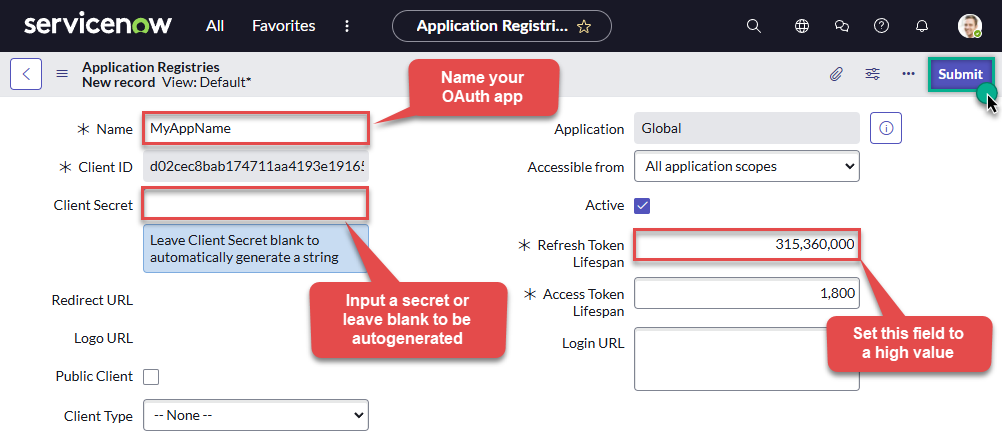
-
Done! Now you can use Client ID and Client Secret when configuring OAuth Authentication parameters.
Configuring authentication parameters
ServiceNowOAuth [OAuth]https://[$InstanceName$].service-now.com/api/nowRequired Parameters InstanceName Fill-in the parameter... User name Fill-in the parameter... Password Fill-in the parameter... Client ID Fill-in the parameter... Client Secret Fill-in the parameter... ApiVersion Fill-in the parameter... Optional Parameters RetryMode RetryWhenStatusCodeMatch RetryStatusCodeList 429|503 RetryCountMax 5 RetryMultiplyWaitTime True 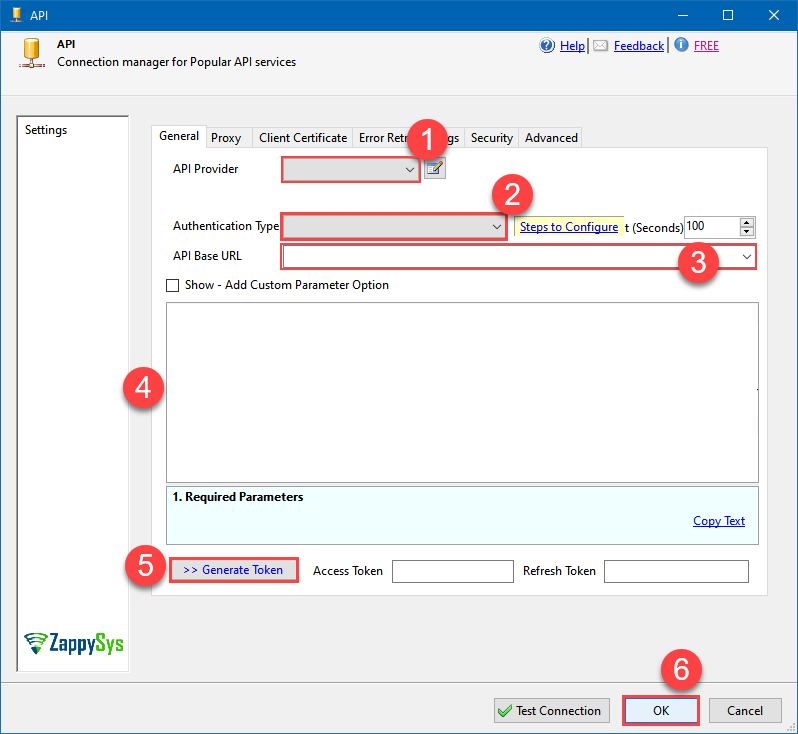
-
Select the desired endpoint, change/pass the properties values, and click on Preview Data button to make the API call.
API Source - ServiceNowAllows the reading and writing of incidents, attachments, and more in ServiceNow without coding! The ZappySys ServiceNow API Connector provides easy-to-use, high-performance API access.
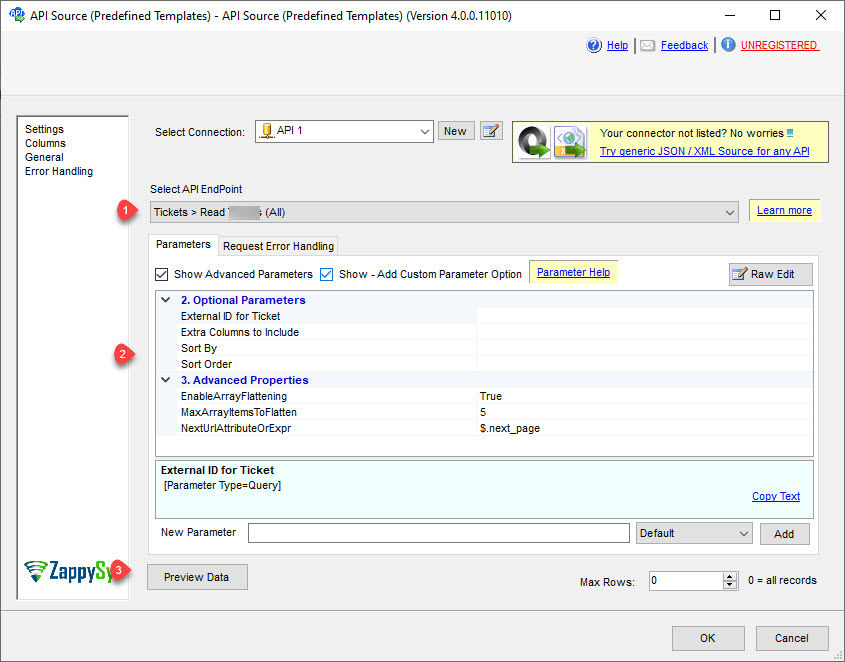
-
That's it! We are done! Just in a few clicks we configured the call to ServiceNow using ServiceNow Connector.
You can load the source data into your desired destination using the Upsert Destination, which supports SQL Server, PostgreSQL, and Amazon Redshift. We also offer other destinations such as CSV, Excel, Azure Table, Salesforce, and more. You can check out our SSIS PowerPack Tasks and components for more options. (*loaded in Trash Destination)
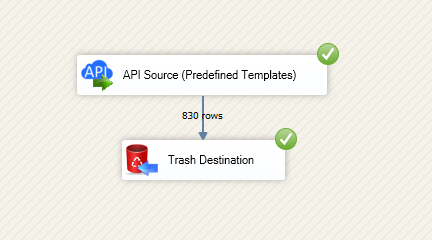
Write data to ServiceNow using SSIS (Import data)
In this section we will learn how to configure and use ServiceNow Connector in the API Destination to write data to ServiceNow.
Video tutorial
This video covers following and more so watch carefully. After watching this video follow the steps described in this article.
- How to download SSIS PowerPack for
ServiceNow integration in SSIS - How to configure connection for
ServiceNow - How to write or lookup data to
ServiceNow - Features about SSIS API Destination
- Using
ServiceNow Connector in SSIS
Step-by-step instructions
In upper section we learned how to read data, now in this section we will learn how to configure ServiceNow in the API Source to POST data to the ServiceNow.
-
Read the data from the source, being any desired source component. In example we will use ZappySys Dummy Data Source component.
-
From the SSIS Toolbox drag and drop API Destination (Predefined Templates) on the Data Flow Designer surface and connect source component with it, and double click to edit it.
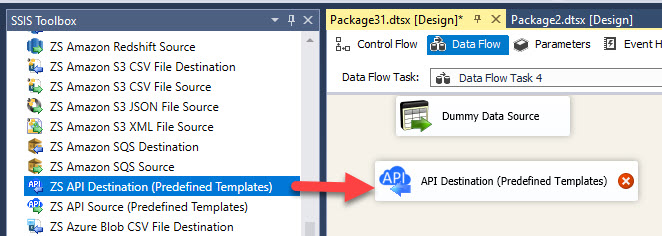
-
Select New Connection to create a new connection:
API Destination - ServiceNowAllows the reading and writing of incidents, attachments, and more in ServiceNow without coding! The ZappySys ServiceNow API Connector provides easy-to-use, high-performance API access.
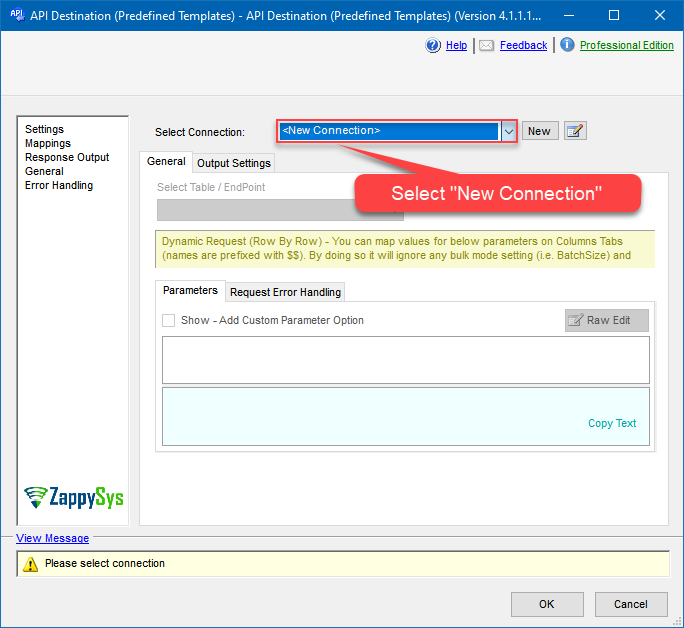
-
Use a preinstalled ServiceNow Connector from Popular Connector List or press Search Online radio button to download ServiceNow Connector. Once downloaded simply use it in the configuration:
ServiceNow
-
Proceed with selecting the desired Authentication Type. Then select API Base URL (in most cases default one is the right one). Finally, fill in all the required parameters and set optional parameters if needed. You may press a link Steps to Configure which will help set certain parameters. More info is available in Authentication section.
Authenticate using ServiceNow instance username and password.
Steps how to get and use ServiceNow credentials
Locate your ServiceNow instance credentials and use them for HTTP authentication:
- Go to https://developer.servicenow.com/dev.do and log in.
- Click on your profile picture.
-
When a menu appears, click on Manage instance password or a similar option:

-
In a new window you will see your HTTP Basic Authentication credentials:

-
Done! Use this username and password when configuring OAuth Authentication parameters.
Configuring authentication parameters
ServiceNowBasic Auth [Http]https://[$InstanceName$].service-now.com/api/nowRequired Parameters InstanceName Fill-in the parameter... User name Fill-in the parameter... Password Fill-in the parameter... Optional Parameters ApiVersion v2 RetryMode RetryWhenStatusCodeMatch RetryStatusCodeList 429 RetryCountMax 5 RetryMultiplyWaitTime True 
Authenticate using ServiceNow instance username, password, OAuth Client ID, and Client Secret. [API reference]
Steps how to get and use ServiceNow credentials
Create OAuth application and use it for authentication:
- Login to your instance at https://your-instance-id.service-now.com.
-
Start by clicking on menu item All, then search for oauth, and click Application Registry option:

-
Then click button New:

-
Continue by clicking Create an OAuth API endpoint for external clients option:

-
Move on by naming your OAuth application and entering a Client Secret (or let it be generated automatically).
-
Finally give it a final touch by increasing the Refresh Token Lifespan value to
315,360,000(it should last for 10 years):
-
Done! Now you can use Client ID and Client Secret when configuring OAuth Authentication parameters.
Configuring authentication parameters
ServiceNowOAuth [OAuth]https://[$InstanceName$].service-now.com/api/nowRequired Parameters InstanceName Fill-in the parameter... User name Fill-in the parameter... Password Fill-in the parameter... Client ID Fill-in the parameter... Client Secret Fill-in the parameter... ApiVersion Fill-in the parameter... Optional Parameters RetryMode RetryWhenStatusCodeMatch RetryStatusCodeList 429|503 RetryCountMax 5 RetryMultiplyWaitTime True 
-
Select the desired endpoint, change/pass the properties values, and go to the Mappings tab to map the columns.
API Destination - ServiceNowAllows the reading and writing of incidents, attachments, and more in ServiceNow without coding! The ZappySys ServiceNow API Connector provides easy-to-use, high-performance API access.
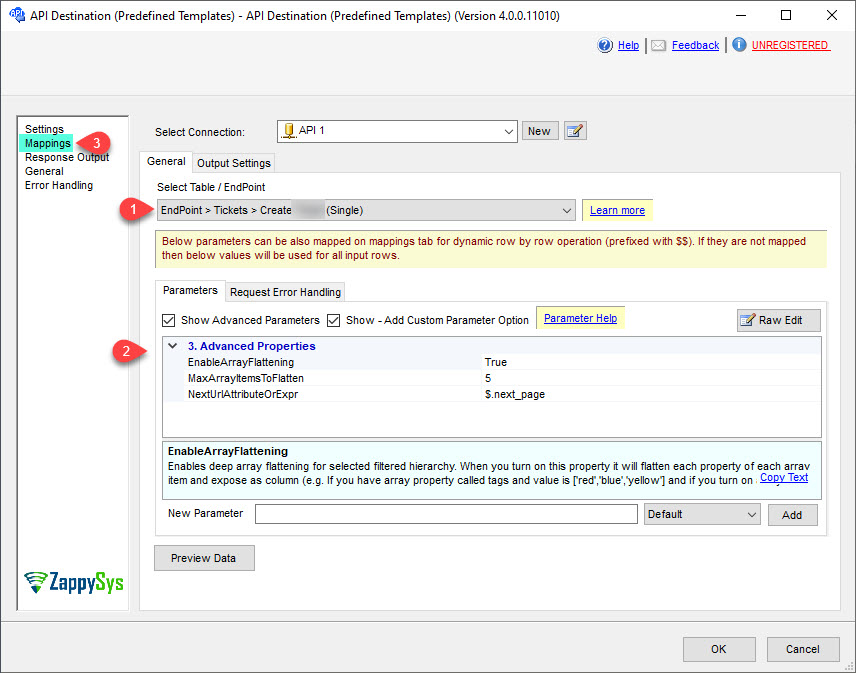
-
Finally, map the desired columns:
API Destination - ServiceNowAllows the reading and writing of incidents, attachments, and more in ServiceNow without coding! The ZappySys ServiceNow API Connector provides easy-to-use, high-performance API access.
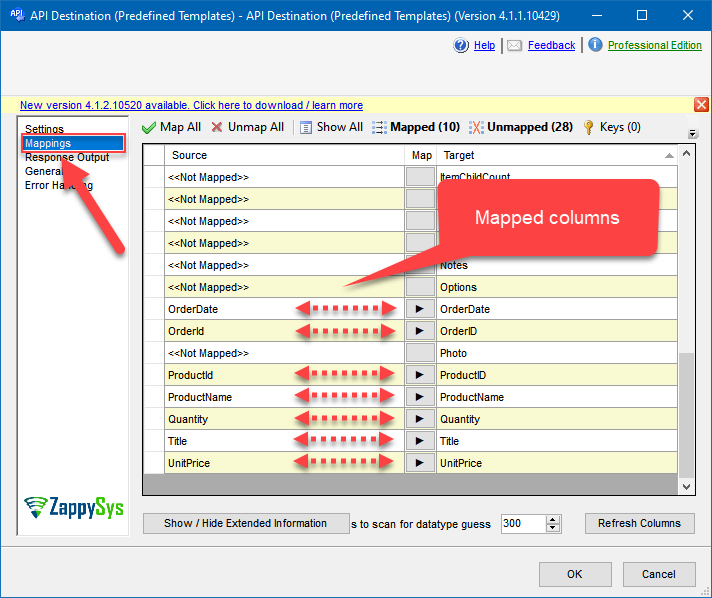
-
That's it; we successfully configured the POST API Call. In a few clicks we configured the ServiceNow API call using ZappySys ServiceNow Connector
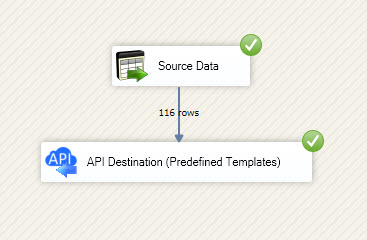
Load ServiceNow data into SQL Server using Upsert Destination (Insert or Update)
Once you configured the data source, you can load ServiceNow data into SQL Server using Upsert Destination.
Upsert Destination can merge or synchronize source data with the target table.
It supports Microsoft SQL Server, PostgreSQL, and Redshift databases as targets.
Upsert Destination also supports very fast bulk upsert operation along with bulk delete.
Upsert operation
- a database operation which performs INSERT or UPDATE SQL commands
based on record's existence condition in the target table.
It
Upsert Destination supports INSERT, UPDATE, and DELETE operations,
so it is similar to SQL Server's MERGE command, except it can be used directly in SSIS package.
-
From the SSIS Toolbox drag-and-drop Upsert Destination component onto the Data Flow designer background.
-
Connect your SSIS source component to Upsert Destination.
-
Double-click on Upsert Destination component to open configuration window.
-
Start by selecting the Action from the list.
-
Next, select the desired target connection or create one by clicking <New [provider] Connection> menu item from the Target Connection dropdown.
-
Then select a table from the Target Table list or click New button to create a new table based on the source columns.
-
Continue by checking Insert and Update options according to your scenario (e.g. if Update option is unchecked, no updates will be made).
-
Finally, click Map All button to map all columns and then select the Key columns to match the columns on:
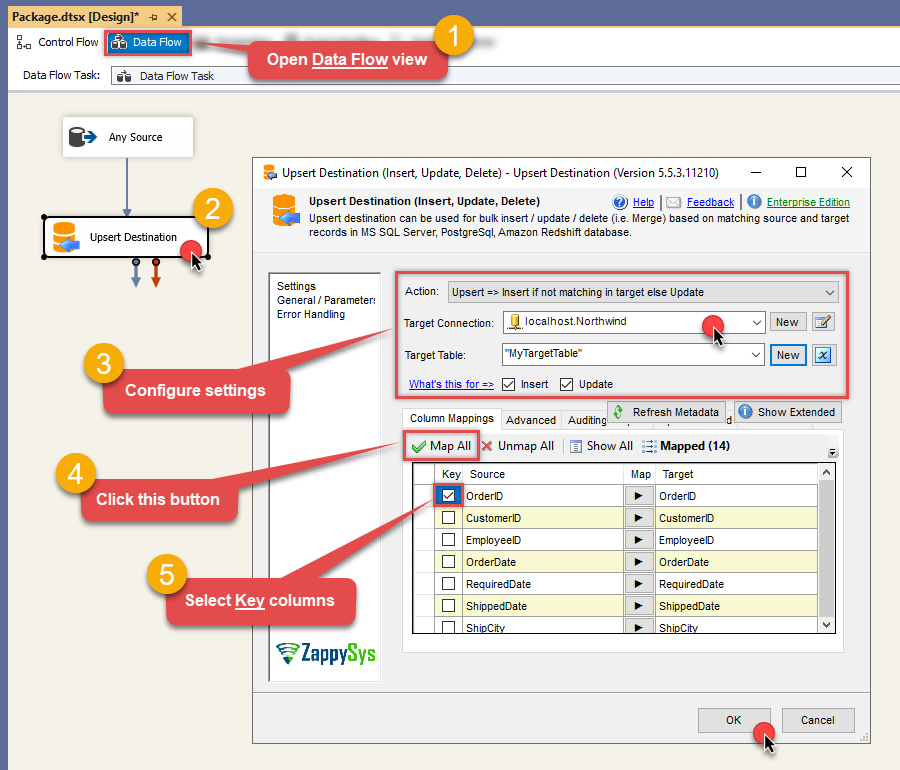
-
Click OK to save the configuration.
-
Run the package and ServiceNow data will be merged with the target table in SQL Server, PostgreSQL, or Redshift:
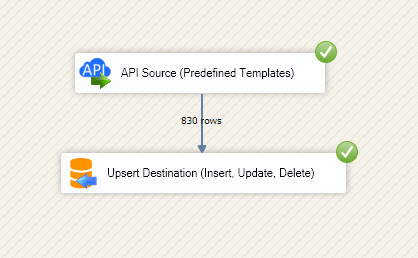
-
Done!
Deploy and schedule SSIS package
After you are done creating SSIS package, most likely, you want to deploy it to SQL Server Catalog and run it periodically. Just follow the instructions in this article:
Running SSIS package in Azure Data Factory (ADF)
To use SSIS PowerPack in ADF, you must first prepare Azure-SSIS Integration Runtime. Follow this link for detailed instructions:
Actions supported by ServiceNow Connector
ServiceNow Connector supports following actions for REST API integration:
Delete a Table Row
Description
Insert a row into the table.
Parameters
You can provide the following parameters to this action:
-
TableName
Input Fields
You can provide the following fields to this action:
-
[Dynamic Column]
Output Fields
The following fields are returned after calling this action:
-
sys_id -
[Dynamic Column]
Visit documentation for more information.
Delete table row
Description
Delete the specified row in the table by row 'sys_id'.
Parameters
You can provide the following parameters to this action:
-
TableName -
SysId
Input Fields
You can provide the following fields to this action:
-
sys_id
Output Fields
The following fields are returned after calling this action:
-
status -
sys_id -
http_status
Visit documentation for more information.
Get List Of System Tables Admin Use Sys Db Object
Description
Get a list of tables created by 'system' user.
Parameters
You can provide the following parameters to this action:
-
Page Size (Default=2000, Max=10000) -
SysId
Input Fields
You can provide the following fields to this action:
-
N/A
Output Fields
The following fields are returned after calling this action:
-
sys_id -
name -
label -
sys_name -
create_access -
alter_access -
access -
live_feed_enabled -
sys_updated_on -
sys_class_name -
is_extendable -
user_role -
create_access_controls -
delete_access -
sys_updated_by -
sys_class_path -
sys_created_on -
caller_access -
client_scripts_access -
extension_model -
actions_access -
sys_scope_link -
sys_scope_value -
sys_created_by -
sys_class_code -
read_access -
super_class -
sys_mod_count -
ws_access -
update_access -
sys_package_link -
sys_package_value -
sys_update_name -
scriptable_table -
configuration_access -
number_ref -
sys_policy -
sys_scope -
sys_package -
super_class_link -
super_class_value -
number_ref_link -
number_ref_value -
user_role_link -
user_role_value
Visit documentation for more information.
Get List of Tables
Description
Get a list of tables.
Parameters
You can provide the following parameters to this action:
-
N/A
Input Fields
You can provide the following fields to this action:
-
N/A
Output Fields
The following fields are returned after calling this action:
-
name -
label
Visit documentation for more information.
Get List Of Tables Admin Use Sys Db Object
Description
Get a list of tables by quering sys_db_object. To read data from this object make sure user has read permission to this table.
Parameters
You can provide the following parameters to this action:
-
Page Size (Default=2000, Max=10000) -
SysId -
Query -
Fields
Input Fields
You can provide the following fields to this action:
-
N/A
Output Fields
The following fields are returned after calling this action:
-
sys_id -
name -
label -
sys_name -
create_access -
alter_access -
access -
live_feed_enabled -
sys_updated_on -
sys_class_name -
is_extendable -
user_role -
create_access_controls -
delete_access -
sys_updated_by -
sys_class_path -
sys_created_on -
caller_access -
client_scripts_access -
extension_model -
actions_access -
sys_scope_link -
sys_scope_value -
sys_created_by -
sys_class_code -
read_access -
super_class -
sys_mod_count -
ws_access -
update_access -
sys_package_link -
sys_package_value -
sys_update_name -
scriptable_table -
configuration_access -
number_ref -
sys_policy -
sys_scope -
sys_package -
super_class_link -
super_class_value -
number_ref_link -
number_ref_value -
user_role_link -
user_role_value
Visit documentation for more information.
Get List Of User Tables Admin Use Sys Db Object
Description
Get a list of tables not created by 'system' user.
Parameters
You can provide the following parameters to this action:
-
Page Size (Default=2000, Max=10000) -
SysId
Input Fields
You can provide the following fields to this action:
-
N/A
Output Fields
The following fields are returned after calling this action:
-
sys_id -
name -
label -
sys_name -
create_access -
alter_access -
access -
live_feed_enabled -
sys_updated_on -
sys_class_name -
is_extendable -
user_role -
create_access_controls -
delete_access -
sys_updated_by -
sys_class_path -
sys_created_on -
caller_access -
client_scripts_access -
extension_model -
actions_access -
sys_scope_link -
sys_scope_value -
sys_created_by -
sys_class_code -
read_access -
super_class -
sys_mod_count -
ws_access -
update_access -
sys_package_link -
sys_package_value -
sys_update_name -
scriptable_table -
configuration_access -
number_ref -
sys_policy -
sys_scope -
sys_package -
super_class_link -
super_class_value -
number_ref_link -
number_ref_value -
user_role_link -
user_role_value
Visit documentation for more information.
Get Table Columns
Description
Get a list of columns of a table.
Parameters
You can provide the following parameters to this action:
-
TableName
Input Fields
You can provide the following fields to this action:
-
N/A
Output Fields
The following fields are returned after calling this action:
-
name -
element -
label -
internal_type -
max_length -
column_type -
type -
filterable -
reference_display_field -
reference_attributes_display_field -
reference_attributes_ref_ac_columns -
reference_attributes_ref_ac_columns_search -
reference_attributes_ref_ac_display_value -
reference_attributes_ref_auto_completer -
canmatch -
cangroup -
max_unit -
mandatory -
reference -
default -
base_type -
read_only -
hint -
attributes -
cansort -
multitext -
choice_type -
choices
Visit documentation for more information.
Get Table Columns Admin Use Sys Dictionary
Description
Get a list of columns by quering sys_dictionary. To read data from this table make sure user has read permission to sys_dictionary table.
Parameters
You can provide the following parameters to this action:
-
TableName -
Page Size (Default=2000, Max=10000) -
PagingOffset
Input Fields
You can provide the following fields to this action:
-
N/A
Output Fields
The following fields are returned after calling this action:
-
sys_id -
name -
element -
internal_type -
max_length -
column_label -
sys_name -
comments -
calculation -
dynamic_ref_qual -
choice_field -
function_field -
sys_updated_on -
spell_check -
reference_cascade_rule -
reference -
sys_updated_by -
read_only -
sys_created_on -
array_denormalized -
element_reference -
reference_key -
reference_qual_condition -
xml_view -
dependent -
internal_type_link -
sys_created_by -
use_dependent_field -
delete_roles -
virtual_type -
active -
choice_table -
foreign_database -
sys_update_name -
unique -
dependent_on_field -
dynamic_creation -
primary -
sys_policy -
next_element -
virtual -
widget -
use_dynamic_default -
sizeclass -
mandatory -
sys_class_name -
dynamic_default_value -
write_roles -
array -
audit -
read_roles -
sys_scope_link -
sys_scope_value -
create_roles -
dynamic_creation_script -
defaultsort -
use_reference_qualifier -
display -
reference_floats -
sys_mod_count -
default_value -
staged -
reference_type -
sys_package_link -
sys_package_value -
formula -
attributes -
choice -
reference_qual -
table_reference -
text_index -
function_definition -
sys_scope -
sys_package
Visit documentation for more information.
Get Table Rows
Description
Get table rows.
Parameters
You can provide the following parameters to this action:
-
TableName -
Page Size (Default=2000, Max=10000) -
SysId -
Fields -
Query / Order By (Server Side Filter)
Input Fields
You can provide the following fields to this action:
-
N/A
Output Fields
The following fields are returned after calling this action:
-
sys_id -
[Dynamic Column]
Visit documentation for more information.
Update a Table Row
Description
Insert a row into the table.
Parameters
You can provide the following parameters to this action:
-
TableName -
SysId
Input Fields
You can provide the following fields to this action:
-
[Dynamic Column] -
sys_id
Output Fields
The following fields are returned after calling this action:
-
sys_id -
[Dynamic Column]
Visit documentation for more information.
Make Generic API Request
Description
This is generic endpoint. Use this endpoint when some actions are not implemented by connector. Just enter partial URL (Required), Body, Method, Header etc. Most parameters are optional except URL.
Parameters
You can provide the following parameters to this action:
-
Url -
Body -
IsMultiPart -
Filter -
Headers
Input Fields
You can provide the following fields to this action:
-
N/A
Output Fields
The following fields are returned after calling this action:
-
N/A
Visit documentation for more information.
Make Generic API Request (Bulk Write)
Description
This is a generic endpoint for bulk write purpose. Use this endpoint when some actions are not implemented by connector. Just enter partial URL (Required), Body, Method, Header etc. Most parameters are optional except URL.
Parameters
You can provide the following parameters to this action:
-
Url -
IsMultiPart -
Filter -
Headers
Input Fields
You can provide the following fields to this action:
-
N/A
Output Fields
The following fields are returned after calling this action:
-
N/A
Visit documentation for more information.
Conclusion
In this article we showed you how to connect to ServiceNow in SSIS and integrate data without any coding, saving you time and effort.
We encourage you to download ServiceNow Connector for SSIS and see how easy it is to use it for yourself or your team.
If you have any questions, feel free to contact ZappySys support team. You can also open a live chat immediately by clicking on the chat icon below.
Download ServiceNow Connector for SSIS Documentation

